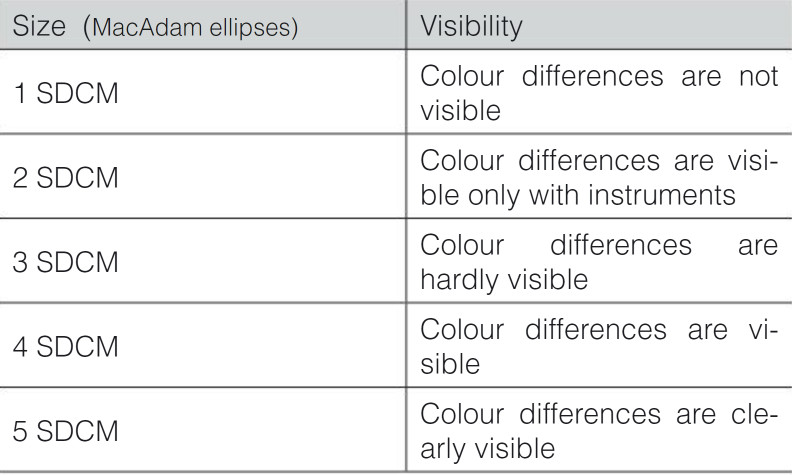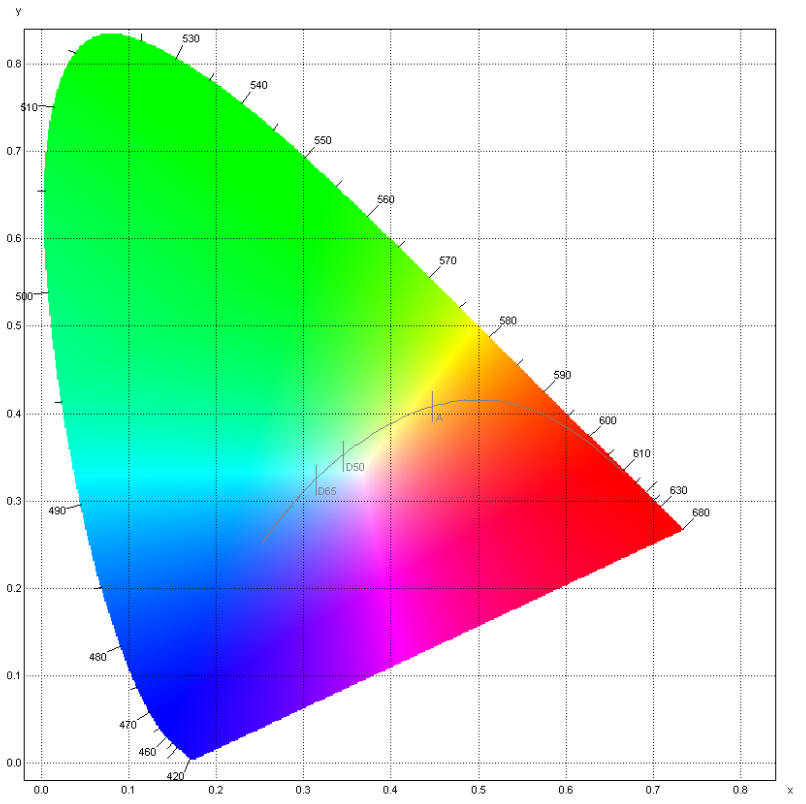White LED
Several distinctions are made during the production process of the LED lights selected. The chromatic areas called ‘bin’ are horizontal contours along the BBL line. Colour uniformity depends on the manufacturer’s know-how and quality standards. A larger selection means higher quality, but also higher costs.
Cold white

5000K – 7000K CRI 70
Typical colour temperature: 5600K
Outdoor applications ( e.g., parks, gardens )
Natural white

3700K – 4300K CRI 75
Typical colour temperature: 4100K
Combinations with existing light sources ( e.g., shopping centers )
Warm white

2800K – 3400K CRI 80
Typical colour temperature: 3200K
For indoor applications, to enhance colours
Amber

2200K
Typical colour temperature: 2200K
Outdoor applications ( e.g., parks, gardens, historical centers )
MacAdam Ellipses
Refer to the area on a chromaticity diagram that contains all the colours which are indistinguishable, to the average human eye, from the colour at the centre of an ellipse. The contour of the ellipse represents the just-noticeable difference of chromaticity. MacAdam shows the difference between two light sourcesthrough ellipses, which are described as having ‘steps’ that indicate the standard deviation of colour. In applications where light sources are visible, this phenomenon should be taken into account because a 3-step ellipse has a lower colour variation than a 5-step.


Coloured LEDs
The CIE chromatic diagram is based on the physiological peculiarity of the human eye to assess colours by breaking them down into three fundamental chromatic components (three-colour process): red, blue and green, positioned at the top of the diagram curve. The CIE chromatic diagram can be obtained by calculating x and y for each pure colour. The spectrum colours (or pure colours) can be found on the contour curve, while the colours inside the diagram are real colours. It should be noted that the colour white (and other colours in the central area – achromatic colours or shades of grey) are not pure colours, and can not be associated to a specific wavelength.

Post time: Oct-21-2022





